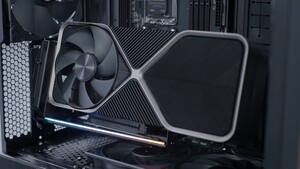A Week of Gaming on G-SYNC
After a week of using an ASUS VG248QE equipped with a G-SYNC module, I can honestly say that much of its hype is completely justified. In fast-paced shooters the ability to run with ultra-low input lag and very little stutter alongside the image quality benefits typically associated with VSync is nothing short of a revelation. The benefits within plodding RTS games are less pronounced but nonetheless still evident when doing quick viewpoint movements.
Typically my gaming is done on a 60Hz IPS monitor so the difference between my current setup and one that’s G-SYNC enabled has been extreme. The benefits were front and center with noticeable decreases in lag and an altogether cleaner sense of onscreen movement. Believe it or not, switching back to my old gaming methods brought about what can be best described as Stockholm Syndrome. I yearned for the G-SYNC gaming experience even though my IPS panel provided a much richer image. Luckily, once IPS G-SYNC monitors become available, I won't have to make this trade-off.
Even folks currently using 120Hz or 144Hz panels will likely see improvements, even if their graphics card supports NVIDIA’s Adaptive VSync and can consistently output between 90 to 120FPS at a given resolution. Switching between an Acer GD235HZ and the VG248QE wasn't quite as jarring as the switch between G-SYNC and 60Hz IPS but once again I could certainly notice how much cleaner this new technology's output was.
On the input lag front, everyone will benefit and for gamers this one feature can make a massive difference in reaction times and accuracy. For an alpha-stage product my experience with G-SYNC thus far has been nothing short of revolutionary.
...
Even 144Hz panels paired up with an enthusiast-grade system and ultra-high detail settings will see tangible fluidity enhancements from G-SYNC as framerates make their way below 60.



